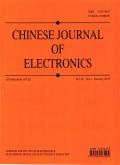Research on Semantic Communication Based on Joint Control Mechanism of Shallow and Deep Neural Network
IF 3
4区 计算机科学
Q3 ENGINEERING, ELECTRICAL & ELECTRONIC
引用次数: 0
Abstract
With the rapid development of deep learning, various semantic communication models are emerging, but the current semantic communication models still have much room for improvement in the coding layer. For this reason, a joint-residual neural networks (Joint-ResNets) framework based on the joint control of shallow neural networks (SNNs) and deep neural networks (DNNs) is proposed to cope with the problems in semantic communication coding. The framework synergizes SNNs and DNNs based on their shared utility, and uses variable weight α term to control the ratio of SNNs and DNNs to fully utilize the simplicity of SNNs and the richness of DNNs. The article details the construction of the Joint-ResNets framework and its canonical use in classical semantic communication models, and illustrates the control mechanism of the variable weight α term in the Joint-ResNets framework and its importance in balancing the model complexity between SNNs and DNNs. The article takes the task-oriented communication model in the device edge collaborative reasoning system as an example for experimentation and analysis. The experimental validation shows that DNNs and SNNs can be combined in a more effective way to standardize semantic coding, which improves the overall predictive performance, interpretability, and robustness of semantic communication models, and this framework is expected to bring new breakthroughs in the field of semantic communication.基于浅、深神经网络联合控制机制的语义通信研究
随着深度学习的快速发展,各种语义通信模型不断涌现,但目前的语义通信模型在编码层还有很大的改进空间。为此,提出了一种基于浅层神经网络(snn)和深层神经网络(dnn)联合控制的联合残差神经网络(joint- resnets)框架,以解决语义通信编码中的问题。该框架基于snn和dnn的共享效用进行协同,并使用变权α项控制snn和dnn的比例,以充分利用snn的简单性和dnn的丰富性。本文详细介绍了Joint-ResNets框架的构建及其在经典语义通信模型中的典型应用,并阐述了Joint-ResNets框架中变权α项的控制机制及其在平衡snn和dnn之间模型复杂性中的重要性。本文以设备边缘协同推理系统中面向任务的通信模型为例进行了实验和分析。实验验证表明,dnn和snn可以更有效地结合起来实现语义编码的标准化,从而提高了语义通信模型的整体预测性能、可解释性和鲁棒性,该框架有望在语义通信领域带来新的突破。
本文章由计算机程序翻译,如有差异,请以英文原文为准。
求助全文
约1分钟内获得全文
求助全文
来源期刊

Chinese Journal of Electronics
工程技术-工程:电子与电气
CiteScore
3.70
自引率
16.70%
发文量
342
审稿时长
12.0 months
期刊介绍:
CJE focuses on the emerging fields of electronics, publishing innovative and transformative research papers. Most of the papers published in CJE are from universities and research institutes, presenting their innovative research results. Both theoretical and practical contributions are encouraged, and original research papers reporting novel solutions to the hot topics in electronics are strongly recommended.
 求助内容:
求助内容: 应助结果提醒方式:
应助结果提醒方式:


